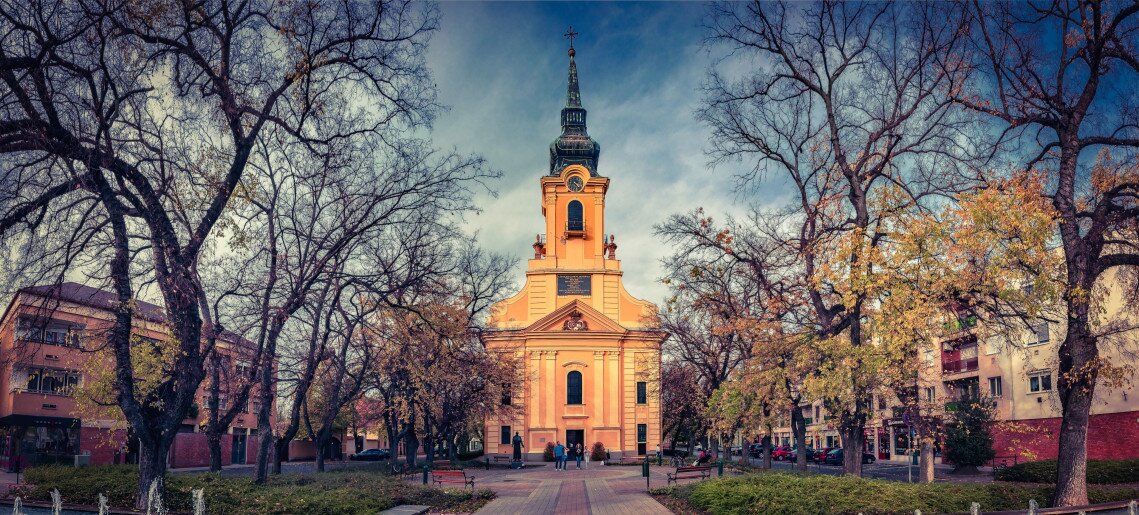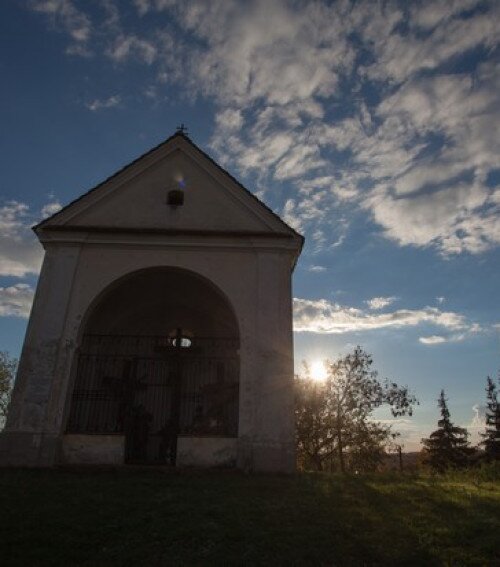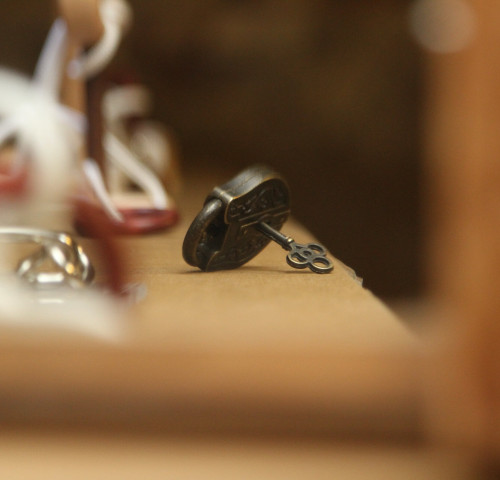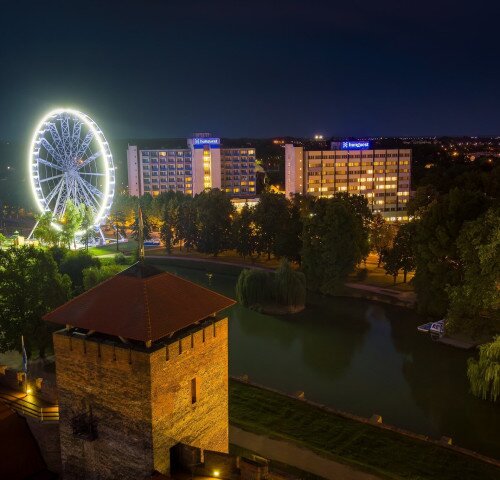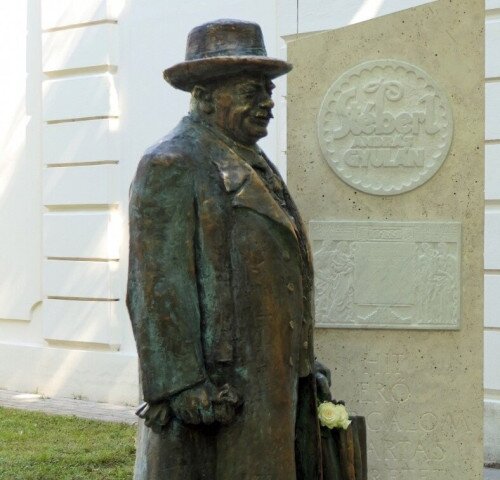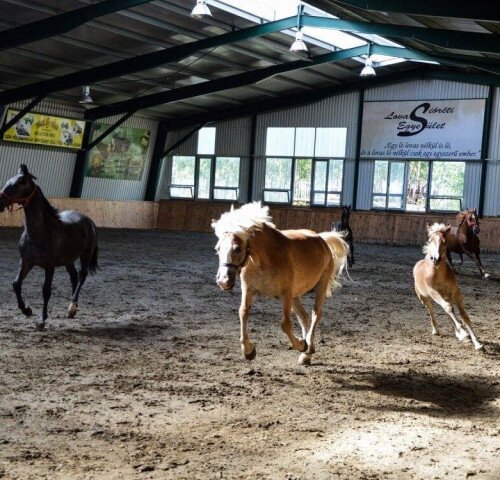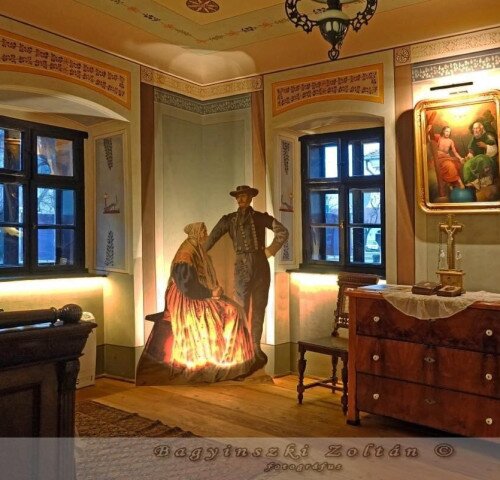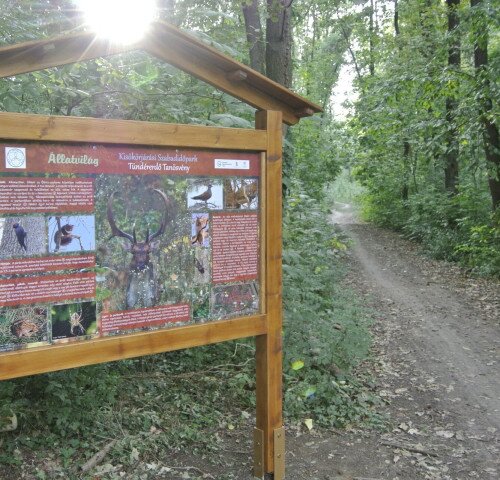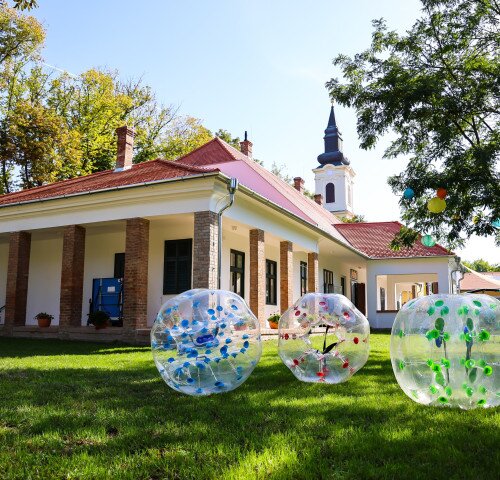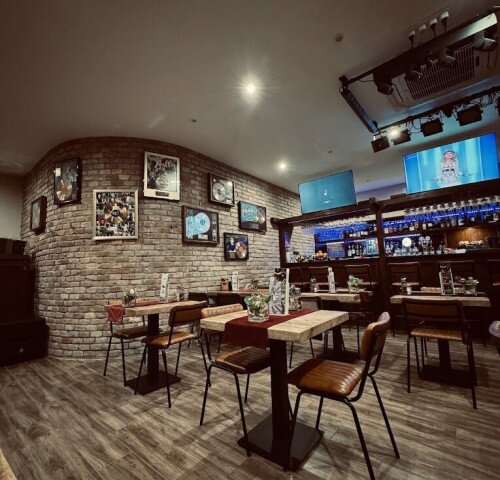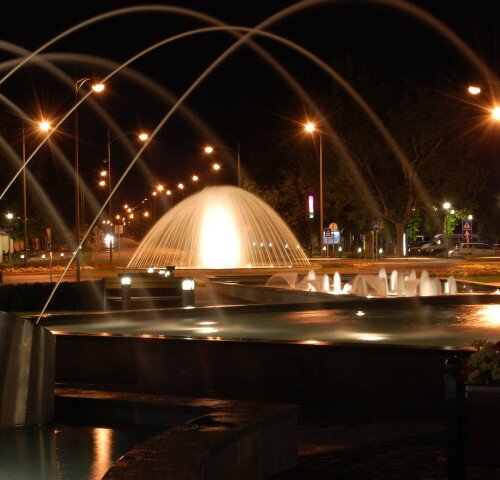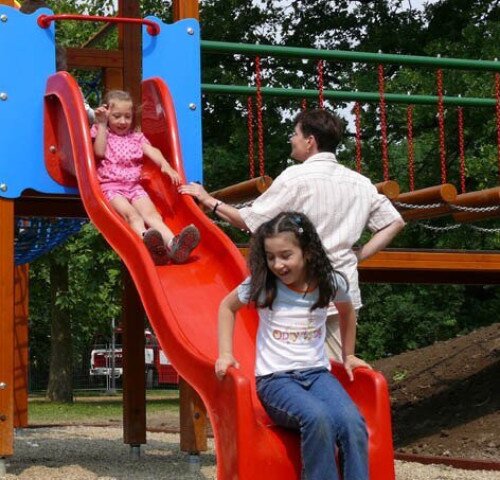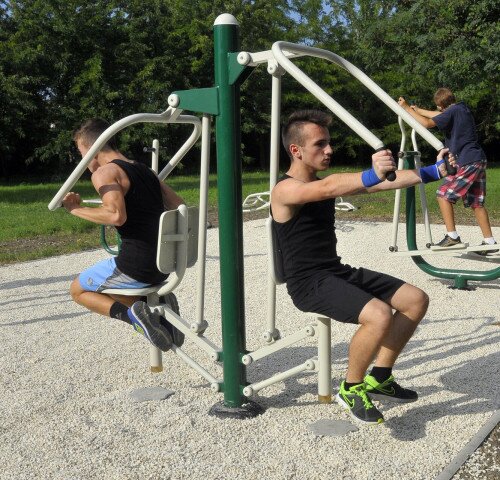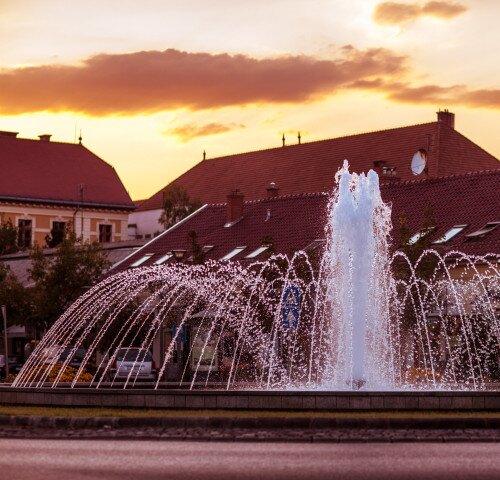Photo: Balázs Mocsári
Before the Ottoman era, a church already stood on the site of today’s Parish Church of Our Lady ‘Nádi’ in Gyula, once housing the highly venerated image of the “‘Nádi’ Virgin Mary.” Later, during Ottoman rule, both the church and the image were destroyed. The construction of the present-day church began in 1775 at the initiative of Ferenc Harruckern. Designed by estate architect János Károly Linck, the parish was built in Baroque and Zopf (late Baroque) style. It was consecrated in 1777 and dedicated to the Immaculate Conception of Virgin Mary.
The single-nave church features valuable altarpieces depicting the Immaculate Virgin, Saint Anne, and Saint Joseph. The ceiling is adorned with a grand 470-square-meter secco (fresco painted on dry plaster with pigments mixed in water), painted by Mihály Patay between 1986 and 1987. This impressive artwork depicts important ecclesiastical and historical figures, along with significant events from the history of Gyula. To the right of the sanctuary lies the tomb of the church’s benefactor, Ferenc Harruckern, sculpted by Viennese artist Martin Schmidt. The altar, carved from walnut by Tibor Lakatos, is adorned with a painting of Bishop Apor by Veronika M. Simon, created in the late 1990s.
The Parish of Our Lady underwent several renovations in the 18th century, during which both its exterior and interior were enriched with Classicist elements.
It was in this church that Baron Vilmos Apor was ordained bishop. He had served as the spiritual leader of Gyula’s Catholic community for 25 years before continuing his ecclesiastical duties in Győr. However, Baron Apor’s time as Bishop of Győr was tragically short. At the end of World War II, when Soviet forces reached the city, while he tried to protect girls, women, and nuns seeking refuge in the palace cellar, he was fatally wounded during the confrontation with the soldiers. Though he successfully prevented the soldiers from descending into the cellar, one of them fired back at him as they were leaving. He was struck by three bullets: one grazed his forehead, another pierced the cuff of his cassock and shirt on his right arm, and the fatal shot entered his abdominal cavity. It was Good Friday, a time that could be seen as symbolic, as Apor was also prepared to give his life for those in his care. He succumbed to his injuries on Easter Monday.
A statue of the martyred bishop and former parish priest of Gyula stands in front of the church, erected by the people of the town in his honour.
Contact
- 5700 Gyula, Harruckern square 2.

